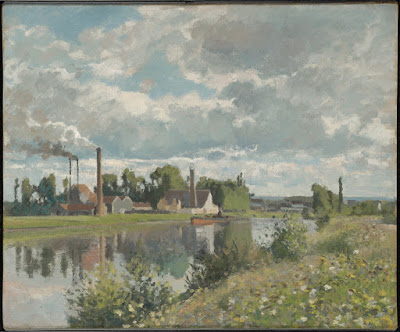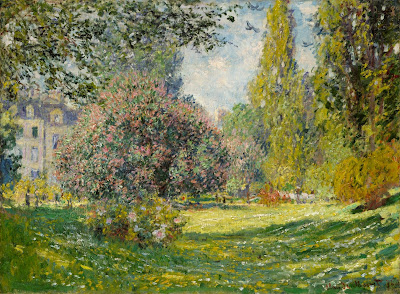LondonJazzCollector (Audio)
Barney Wilen - La Note Bleue (1987)
Jack Delano's Color Photos of Chicago's Rail Yards in the 1940s
“Jack Delano was one of the photographers who worked in Roy Stryker’s Farm Security Administration photography program in the early 1940s, traveling the American countryside, photographing people and places with the stated goal of ‘introducing America to Americans.’ In 1942 and ’43, Delano spent time in the rail yards of Chicago, documenting the busy freight hub and the countless workers who kept the trains running 24 hours a day. Some of his most striking images were made on Kodachrome color transparencies, wonderfully preserved in the Library of Congress today. Collected below, a handful of images from Chicago as it was some 75 years ago. ...”
Marcus Glitteris on Curating “Home Grown” at Village Works with: Optimo NYC, Marina Reiter, BC1, Nora Timbila, A. Candela & More
Dubcast Vol.14 (Blind Prophet Returns)
Lost Generation
The ideology hiding in SimCity’s black box
2010 April: SimCity
A Walking Tour In Southern France - Literature by Ezra Pound
2020 April: The Cantos
David Johansen - David Johansen (1978)
YouTube: David Johansen 1 / 9, YouTube: The David Johansen Group 1 / 18 (Live)
2015 June: New York Dolls (1973), 2016 September: Too Much Too Soon - New York Dolls (1973), 2017 April: From Paris With Love (L.U.V.), 2020 July: Valley of the New York Dolls
How to Make Stunning Croissants at Home
Seine - Île de la Cité
“The Île de la Cité is one of two remaining natural river islands in the Seine within the city of Paris (the other being the Île Saint-Louis). It is the center of Paris and the location where the medieval city was refounded. The western end of the islet has held a palace since Merovingian times, and its eastern end since the same period has been consecrated to religion, especially after the 10th-century construction of a cathedral preceding today's Notre-Dame. ...”
Discover the Night: International Dark Sky Week is Here!
Live from Studio S2 - Hania Rani (2021)
A Cyclist on the English Landscape
“A year ago, as a travel photographer grounded by the pandemic, I started bringing a camera and tripod with me on my morning bicycle rides, shooting them as though they were magazine assignments. It started out as just something to do — a challenge to try to see the familiar through fresh eyes. Soon it blossomed into a celebration of traveling at home. I live in a faded seaside town called St. Leonards-on-Sea, in Sussex, on the south coast of England. If you’ve not heard of it, you’re in good company. It’s not on anybody’s list of celebrated English beauty spots. Indeed, most of my riding is across flat coastal marsh or down-at-the-heel seafront promenades. ...”
The Moment of Impressionism

“Théodore Duret, one of Impressionism’s most impassioned champions, wrote in his famous brochure of 1878, Les Peintres impressionnistes: The impressionists didn’t come into being by themselves, they didn’t shoot up like mushrooms. They are the product of a regular evolution of the modern French school. Natura non facit saltus any more in painting than in other things. The impressionist descend from the naturalist painters, their fathers are Corot, Courbet, and Manet. It’s to these three masters that the art of painting owes the simplest procedures of facture and that spontaneous touch, proceeding by large lines and by the mass, which alone brave the passage of time. ...”

John Ashbery’s Music Library: A Playlist
A Study of New York City’s Belgian Block Heritage
Ephemeral New York: A downtown alley’s Belgian block paving stones
Nicola Cruz
'A parallel universe': the rickety pleasures of America's backroads - in pictures
Parting Shot By Mikhail Horowitz
2015 October: Big League Poets (1978)
Roberto Musci, Giovanni Venosta – Messages & Portraits (1990)
YouTube: The Ups & Downs of a Chewing Gum, Technowaltz, Empty boulevard, Lullabies: mother sings, father plays...
2012 April: Roberto Musci, 2016 December: Tower Of Silence (1983-87)
The Wizard of Lies - Barry Levinson (2017)
Remembering the Commune
2017 March: Paris Commune 1871
How Bob Marley Came to Make Exodus, His Transcendent Album, After Surviving an Assassination Attempt in 1976
2010 November: Bob Marley and the Wailers, 2011 May: Bob Marley & the Wailers Live 1973 - 1975, 2011 July: Tuff Gong Studios 1980, 2012 March: Bob Marley: Live in Santa Barbara, 2012 August: Marley, 2013 March: Bob Marley & The Wailers - Live Forever: The Stanley Theatre, Pittsburgh, PA, 2016 February: "I Shot the Sheriff" / "Stir It Up" - Bob Marley and the Wailers (1973), 2020 February: Best Bob Marley Songs: 20 Essential Legend-Defining Tracks
A blue morning in front of the new Penn Station
Ten Months After George Floyd’s Death, Minneapolis Residents Are at War Over Policing
Sonny Rollins - Our Man In Jazz (1962)
2012 September: The Singular Sound of Sonny Rollins, 2012 December: Village Vanguard, 2015 September: Rollins Plays for Bird (1957), 2016 February: Saxophone Colossus (1956), 2016 May: Plus 4 (1956), 2017 June: Inside Sonny Rollins’s Jazz Archive, Headed Home to Harlem, 2018 April: Tenor Madness (1956), 2017 May: Moving Out (1954), 2018 November: The Bridge (1962), 2019 March: Newk's Time (1959), May 2019: Freedom Suite (1958)
Ridley Scott’s ‘Blade Runner’: A Game-Changing Science-Fiction Classic
2017 November: Blade Runner (1982)
Meet the Forgotten Female Artist Behind the World’s Most Popular Tarot Deck (1909)
JAZZ ON FILM … The Films of Marcello Mastroianni
Wanderer In The Colorful Fields - Jeannine Schulz (2021)
2021 February: Jeannine Schulz’s “Rooms and Surfaces I”









































